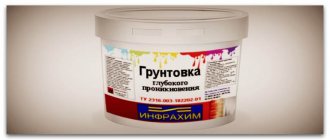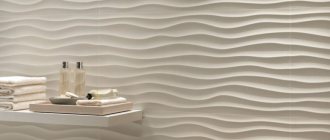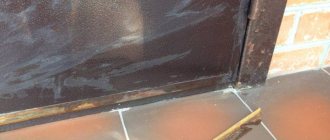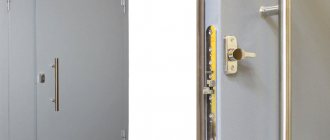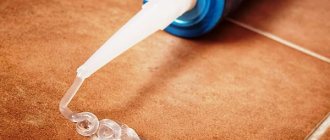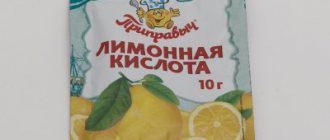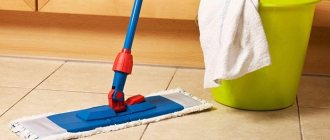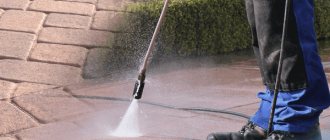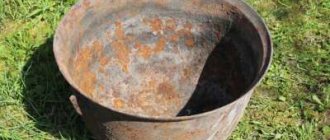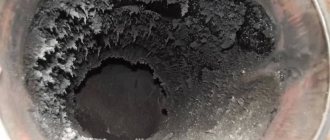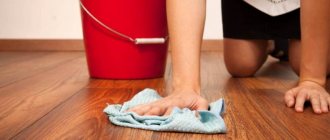Ceramic tiles are easy to care for. It is enough to wipe it regularly with a damp cloth.
But what to do when rusty streaks appear on the perfectly smooth surface of ceramic tiles? Answer: without delaying the cleaning process, choose a method for removing rust stains and begin the process.
We will tell you in this article how and what to use to remove rust from tiles.
Recipes and ways to remove rust from tiles on walls and floors
Ceramic tiles are easy to care for. It is enough to wipe it regularly with a damp cloth.
But what to do when rusty streaks appear on the perfectly smooth surface of ceramic tiles? Answer: without delaying the cleaning process, choose a method for removing rust stains and begin the process.
We will tell you in this article how and what to use to remove rust from tiles.
Pollution prevention
To keep your bathroom always clean, follow these recommendations:
- wipe the tiles after washing to remove fresh stains and drops of water;
- treat grout joints with moisture-proof impregnation;
- During repairs, cover the tiles with a protective film;
- Apply polishing wax to clean tiles: it will create a protective layer and add shine to the surface.
- To prevent fungus from growing in the bathroom, regularly ventilate the room and ensure that the ventilation system is in good working order.
Folk remedies
It is possible to remove rust stains from tiles using improvised means. There are a sufficient number of folk methods to help clean tiles quickly and efficiently.
How to scrub with hydrogen peroxide solution?
Hydrogen peroxide will help remove fresh rust stains on tiles.
It's simple: rusty stains are generously moistened with peroxide and left for ten minutes . Afterwards, wipe off the dirt with a damp cloth or sponge.
If the rust stain has already become embedded in the surface of the ceramic tile, a solution of hydrogen peroxide (50 ml) is mixed with baking soda (2 tsp) and liquid soap (1 tsp).
Rub the prepared mixture onto the stain and leave it for ten minutes. Afterwards, thoroughly wipe the tiles with a clean, damp sponge .
A mixture of vinegar and baking soda
Simple, accessible baking soda and acetic acid are effective means of combating rust stains on tiles.
Algorithm of actions:
- A soft sponge is soaked in a vinegar solution and sprinkled with baking soda.
- As soon as the components, having combined, enter into a chemical reaction (foam and a characteristic hissing sound appear), thoroughly wipe the rust stain with a sponge.
- The already cleaned surface is washed with clean running water.
Lemon and table salt
Products that every housewife has in her kitchen - lemon and salt - will become an indispensable tool in the fight against red plaque on tiles.
Algorithm of actions:
- Apply fresh lemon juice to a rust stain on a tile;
- after fifteen minutes, table salt is poured onto the contamination (it is important that the salt is of extra class with the smallest granules);
- After the salt has completely dissolved in the lemon juice, wipe the stain gently with a sponge or remove it with a napkin.
It is necessary to ensure that the salt granules dissolve completely. Otherwise, scratches and abrasions will remain on the tile.
Cream of tartar powder
A natural, environmentally friendly rust remover is cream of tartar powder. It can be purchased at a grocery store (very often housewives use cream of tartar powder as a baking powder for baking).
Algorithm of actions:
- The rust stain is thoroughly moistened with hydrogen peroxide.
- Cream of tartar powder is poured onto the still damp surface.
- Wipe off the dirt with a damp soft sponge, then wash off the remaining cream of tartar with clean warm water.
How to remove hydrochloric acid?
You can achieve ideal tile cleanliness by using a hydrochloric acid solution for cleaning.
Algorithm of actions:
moisten a piece of cloth in a solution of hydrochloric acid, which is used to cover the rust stain on the ceramic tile;- after twenty minutes, the fabric is thrown away, and the rusty coating (which has become loose from the acid) is carefully removed with a silicone scraper;
- Additionally, the cleaned area is washed first with a soap solution and then with clean warm water.
Surface Features
Although there are universal methods for removing rust, they are completely unsuitable for some surfaces. Therefore, it is better to figure out how to clean which surfaces.
How to clean tiles?
Often the reason for the appearance of traces of rust on sanitaryware and tiles is not the surface itself, but the appearance of rust on internal metal parts. By replacing such parts, you can stop the process of rust spreading. There are several ways to deal with traces of rust on tiles:
- Ammonia and oxalic acid. Leave the surface under the influence of acid for one hour. Then treat with a sponge with ammonia. After this, to achieve cleanliness, wash with plenty of running water;
- Hydrochloric acid. Be careful when working with it. It is necessary to apply a little acid to the surface and then rinse with plenty of water;
- Vinegar. Apply it to the sponge. Place the sponge on the surface for an hour. Then wipe with the same sponge and remove the corrosion. Using the same principle, you can use kerosene instead of vinegar.
How to remove rust stains from plastic?
When removing rust from a plastic or acrylic surface, you need to know one simple method. Salt should be poured onto the area with signs of corrosion. Then you need to take a lemon and make a fresh cut, and use this cut to wipe the area, rubbing salt with the lemon. Afterwards, you don’t need to wait; you can immediately remove the remaining salt and lemon juice and pulp. Repeat the procedure if the effect is not satisfactory.
Rubbing alcohol can help combat minor corrosion on the refrigerator door or ceiling panel. It is necessary to dip a cotton wool in alcohol and treat the surface. Whitening also helps, but should only be used on thick plastic.
How to wipe the fabric?
It is extremely difficult to remove rust stains from clothing or fabric, because it eats into the fibers:
- You can use lemon juice. A lemon slice is wrapped in gauze and ironed;
- A light shirt can be cleaned with hydrogen peroxide;
- You can also mix two glasses of water, a tablespoon of oxalic and acetic acids. The solution is heated to 90 degrees, and the fabric is lowered into it, after which it is washed with water and soda;
- You can make a solution from tartaric acid powder and salt with the addition of water. This solution is applied to the stain and left in the sun. Under the influence of ultraviolet rays, the stain is removed, and then the clothes are washed in the usual way;
- White clothes can be stained using hydrochloric acid. The fabric is dipped in a 25 percent acid solution;
- Colored fabric can be cleaned using a mixture of chalk and glycerin. This composition is applied and left for a day. Afterwards the item is washed.
Metal cleaning
Untreated metal tends to oxidize when exposed to external factors such as humidity or oxygen. It is best to remove corrosion stains while they are small and have not grown over all surfaces:
- At the beginning of the process, you need to take sandpaper or a brush with metal bristles. Many people often limit themselves to this, but this is wrong. It is necessary not only to remove rust, but also to get rid of its future appearance.
- To prevent and combat corrosion, you can use an “anti-rust converter”. Before applying it, those layers of corrosion that are easily deformed are removed. Then the surface is degreased, for example, with gasoline, and only after that this product is applied. When working with such products, you must follow your own safety rules, and in case of contact with the skin or eyes, rinse with running warm water.
- There is also an option to remove rust using a certain composition. To prepare it you will need 1/4 liter of water, 50 g of sodium hydroxide, 50 g of formaldehyde and 50 g of ammonium. The resulting solution is added to a liter of water. Fat-free parts must be immersed in this solution. To completely remove rust, you need to leave the parts in the solution for 30 minutes. Then you need to wash everything with hot water and wipe dry.
- It is better to clean a cast iron cauldron or sink using fish oil. It is applied in a thick layer and left for an hour. It is then removed with water. Fat also leaves a protective film that prevents the development of corrosion.
- Pipes or the car body can be treated with kerosene or turpentine. Bolts and nuts on a car that are rusty can be generously poured with anti-rust and left for a day, then blown off with a stream of air.
- You can also remove rust from an item such as an old coin. It is enough to put it in undiluted vinegar for a day. You can also use ammonia or lemon juice. The latter is especially good for cleaning silver from corrosion.
Special formulations
As a replacement or in addition to folk remedies, special chemical compounds are used to combat rust stains. TOP 3 most popular and effective:
- Anti-rust gel Sanita . Directions for use: apply the product to the stain, leave for ten minutes, then rinse with warm water. The average cost of Sanita Anti-Rust gel is 90 rubles. (500 g bottle).
- Luxus Professional . Directions for use: Spray the product onto the rust stain and leave for fifteen minutes. Afterwards, wash off the treated surface with warm water. If the stain cannot be removed the first time, treat it with the spray again, wait the allotted time, gently wipe with a soft brush, and then rinse with warm water. The average cost of Luxus Professional is 125 rubles. (500 ml bottle).
- Clean Drops rust remover is an excellent option for cleaning not only tiles, but also natural stone surfaces. The product can be used both for household cleaning and for cleaning tiles laid on the facade of the house. The average cost of Clean Drops for rust is 1000 rubles. (per package 5 l).
This video will show you how to remove rust stains from tiles using phosphoric acid:
What can't be used and why?
Do not forget that ceramic tiles are a decorative coating that must be cared for with care and precision.
To preserve the gloss, color and print of the ceramics, under no circumstances should you use hard metal brushes and sponges for cleaning (they leave scratches and can completely remove the decorative pattern).
You should also avoid using abrasive cleaning powders. There are enough liquid, creamy products on store shelves that remove rust stains without harming the decorative surface.
Adviсe
A few secrets of experienced housewives will help speed up the process of removing red stains from a ceramic surface:
Liquid and creamy products will help you quickly remove rust from embossed ceramic tiles. They easily penetrate any unevenness and roughness, effectively removing rust stains.- To ensure that after cleaning rust stains on black tiles there are no streaks left, the surface is additionally wiped with ammonia or glass cleaner.
- In order to achieve maximum cleanliness of ceramic tiles, you can use several methods to remove rusty stains. The main thing is not to apply the product to the tiles at the same time (there is a high risk of damage to the decorative coating). If it was not possible to completely remove the rust the first time, after a while you can use another method.
When cleaning ceramic tiles, it is important to take your time. If a rust remover is used for the first time, it must be tested on an inconspicuous area.
How to wash different types of tiles
Matte.
After washing matte tiles, stains often remain on the surface. If you want your tiles to look perfect, wipe the tiles with a water-vinegar solution or a solution of soda ash. After cleaning, wipe the surface dry with a microfiber cloth.
Embossed.
To clean embossed tiles from stubborn deposits and dirt, use a brush with thick, soft bristles. Pay attention to detergents in the form of foams and emulsions. The active substances in their composition penetrate into hard-to-reach places and quickly dissolve dirt.
Glossy.
The glossy surface often leaves stains, limescale and fingerprints. To keep your tiles looking their best, clean them with window cleaner. Do not use aggressive preparations with abrasive particles: they can damage the coating. To prevent contamination, the tiles can be rubbed with a water-repellent impregnation. It will add shine to the surface and create a film to protect against contamination.
Floor-standing.
To protect joints with colored and light grout, use a special polymer varnish and moisture-resistant impregnations. They prevent cracking due to constant exposure to moisture.
Removing rust using household chemicals
Today, the household chemicals market offers many professional products that will help remove rust from tiles. They all differ in ingredients, consistency (gel, liquid, spray) and price. A review of popular options against rust stains on tiles includes brand products:
Sanita anti-rust gel – intensive cleaner, removes rust stains, water stone, limestone deposits from tiles, sanitary products:
- Composition: the gel consists of organic and inorganic acids, a thickener and a flavoring agent.
- Method of application: to clean the surface, apply Sanita with a brush, after a minute rinse thoroughly with water. Do not mix with bleaches or other cleaning products.
- Advantages: high efficiency, budget price, fast acting, economical consumption.
- Disadvantages: dangerous composition, requires precautions; acrid smell.
- Price: 82 rubles for 500 ml.
Cilit cleaner removes 100% of limestone deposits. Cleans up to 40 types of stains, including rust:
- Ingredients: nonionic and amphoteric surfactants, oxalic acid
- Directions for use: applied to a damp sponge or directly to a contaminated surface previously moistened with water. Leave the product for 1-5 minutes, then rinse thoroughly. If necessary, repeat the procedure. To give the desired shine, wipe the surface dry.
- Advantages: copes well with dirt, does not require much effort.
- Disadvantages: high cost, suitable only for street work.
- Price: 96 for 450 ml.
Clean Drops for old rust stains tackles stains on tiles and natural stone. Can be used outdoors and indoors:
- Composition: organic and inorganic acids, surfactants.
- Directions for use: spray with a special gun, leave on the surface for 10–12 minutes, then rinse with plenty of water. Using a sponge or brush will speed up the work. Re-processing is possible. After use, rinse the spray gun thoroughly with running water.
- Advantages: according to reviews, it removes old stains well and does not leave streaks.
- Disadvantages: high cost, suitable mainly for street work.
- Price: 905 rubles per 5 liter package.
The highly effective Luxus Professional product is suitable for cleaning bathtubs made of different materials and tiles. The spray consists of components that will not harm the environment and human health:
- Ingredients: water, nonionic tensides 5%, inorganic acids, perfume and auxiliary additives.
- Directions for use: apply the spray to the stain, leave for 3–15 minutes, then rinse off. In case of severe contamination, you can wipe with a sponge or brush, then rinse.
- Advantages: harmless composition; convenient packaging with a spray bottle; After spraying, the spray thickens, so it stays on the stained area longer.
- Disadvantages: pungent odor, requires additional brushing.
- Price: 123 rubles for 500 ml.
Folk remedies for rust
You can remove rust at home using proven traditional methods. Home remedies use less aggressive acids than professional ones. You can get rid of rusty stains on tiles using cream of tartar, vinegar and soda, lemon and salt, hydrogen peroxide, and hydrochloric acid.
Cream of tartar
This substance accumulates on the walls of wine barrels. You can buy it in the store. Housewives often use it as a baking powder for baking. To clean tiles, follow these steps:
- Wet the surface and sponge well.
- Sprinkle the rust stain with powder.
- Start removing dirt using circular movements.
- To wash the stain faster, first drip a 3% hydrogen peroxide solution onto it.
Vinegar and soda
A mixture of baking soda and vinegar is often used at home to remove rust. Wear rubber gloves on your hands before cleaning. How to use:
- Dampen a sponge with 6% vinegar solution.
- Sprinkle baking soda generously on top.
- The components form a chemical reaction - don’t miss the moment, start cleaning the tiles right away.
Lemon with salt
You will need fresh lemon juice or a concentrated solution of citric acid. Follow these steps:
- Moisten the surface of the rust stain with lemon juice.
- Wait 15–25 minutes and visually determine the degree of rust dissolution.
- Sprinkle fine table salt on the tile.
- Make sure there are no large crystals or pebbles - they can damage the surface.
- Start removing stains using circular motions. Afterwards all that remains is to wash off the rust.
Hydrochloric acid
An effective, but extremely unsafe way to wash rust stains. The acid is used in its pure form or products based on it are used.
- Apply acid to stains.
- When rusty areas begin to peel off, wash off the stains with water.
- For a shiny finish, dry the tiles with paper towels.
Hydrogen peroxide
You can scrub off rust with hydrogen peroxide. To do this, moisten the tile covering with a 3% solution, wait a few minutes and wipe with a sponge. Old stains are rubbed off with a certain mixture. Method of preparation and use:
- Mix ¼ tbsp. peroxide, 1 tsp. liquid soap and ½ tbsp. baking soda.
- All components must be mixed thoroughly.
- Apply the mixture to the stains and leave for 10 minutes.
- Repeat the procedure if necessary.
Surface Features
Although there are universal methods for removing rust, they are completely unsuitable for some surfaces. Therefore, it is better to figure out how to clean which surfaces.
How to clean tiles?
Often the reason for the appearance of traces of rust on sanitaryware and tiles is not the surface itself, but the appearance of rust on internal metal parts. By replacing such parts, you can stop the process of rust spreading. There are several ways to deal with traces of rust on tiles:
- Ammonia and oxalic acid. Leave the surface under the influence of acid for one hour. Then treat with a sponge with ammonia. After this, to achieve cleanliness, wash with plenty of running water;
- Hydrochloric acid. Be careful when working with it. It is necessary to apply a little acid to the surface and then rinse with plenty of water;
- Vinegar. Apply it to the sponge. Place the sponge on the surface for an hour. Then wipe with the same sponge and remove the corrosion. Using the same principle, you can use kerosene instead of vinegar.
How to remove rust stains from plastic?
When removing rust from a plastic or acrylic surface, you need to know one simple method. Salt should be poured onto the area with signs of corrosion. Then you need to take a lemon and make a fresh cut, and use this cut to wipe the area, rubbing salt with the lemon. Afterwards, you don’t need to wait; you can immediately remove the remaining salt and lemon juice and pulp. Repeat the procedure if the effect is not satisfactory.
Rubbing alcohol can help combat minor corrosion on the refrigerator door or ceiling panel. It is necessary to dip a cotton wool in alcohol and treat the surface. Whitening also helps, but should only be used on thick plastic.
How to wipe the fabric?
It is extremely difficult to remove rust stains from clothing or fabric, because it eats into the fibers:
- You can use lemon juice. A lemon slice is wrapped in gauze and ironed;
- A light shirt can be cleaned with hydrogen peroxide;
- You can also mix two glasses of water, a tablespoon of oxalic and acetic acids. The solution is heated to 90 degrees, and the fabric is lowered into it, after which it is washed with water and soda;
- You can make a solution from tartaric acid powder and salt with the addition of water. This solution is applied to the stain and left in the sun. Under the influence of ultraviolet rays, the stain is removed, and then the clothes are washed in the usual way;
- White clothes can be stained using hydrochloric acid. The fabric is dipped in a 25 percent acid solution;
- Colored fabric can be cleaned using a mixture of chalk and glycerin. This composition is applied and left for a day. Afterwards the item is washed.
Metal cleaning
Untreated metal tends to oxidize when exposed to external factors such as humidity or oxygen. It is best to remove corrosion stains while they are small and have not grown over all surfaces:
- At the beginning of the process, you need to take sandpaper or a brush with metal bristles. Many people often limit themselves to this, but this is wrong. It is necessary not only to remove rust, but also to get rid of its future appearance.
- To prevent and combat corrosion, you can use an “anti-rust converter”. Before applying it, those layers of corrosion that are easily deformed are removed. Then the surface is degreased, for example, with gasoline, and only after that this product is applied. When working with such products, you must follow your own safety rules, and in case of contact with the skin or eyes, rinse with running warm water.
- There is also an option to remove rust using a certain composition. To prepare it you will need 1/4 liter of water, 50 g of sodium hydroxide, 50 g of formaldehyde and 50 g of ammonium. The resulting solution is added to a liter of water. Fat-free parts must be immersed in this solution. To completely remove rust, you need to leave the parts in the solution for 30 minutes. Then you need to wash everything with hot water and wipe dry.
- It is better to clean a cast iron cauldron or sink using fish oil. It is applied in a thick layer and left for an hour. It is then removed with water. Fat also leaves a protective film that prevents the development of corrosion.
- Pipes or the car body can be treated with kerosene or turpentine. Bolts and nuts on a car that are rusty can be generously poured with anti-rust and left for a day, then blown off with a stream of air.
- You can also remove rust from an item such as an old coin. It is enough to put it in undiluted vinegar for a day. You can also use ammonia or lemon juice. The latter is especially good for cleaning silver from corrosion.
After you have gotten rid of rust, you need to prevent corrosion - coat the material with special products and solutions. The surface can also be primed, painted or varnished.
The following video tests simple and inexpensive rust removal methods.
